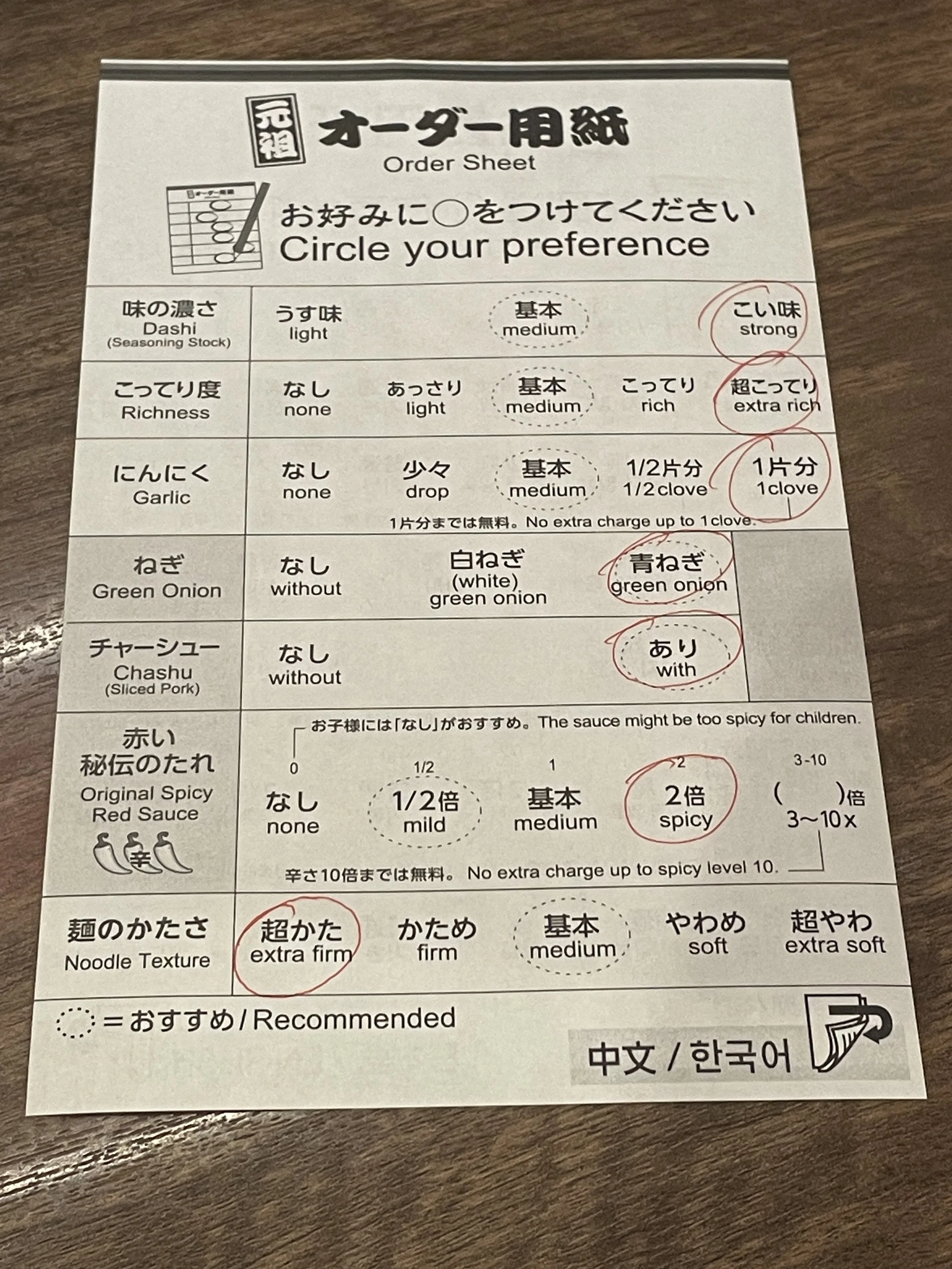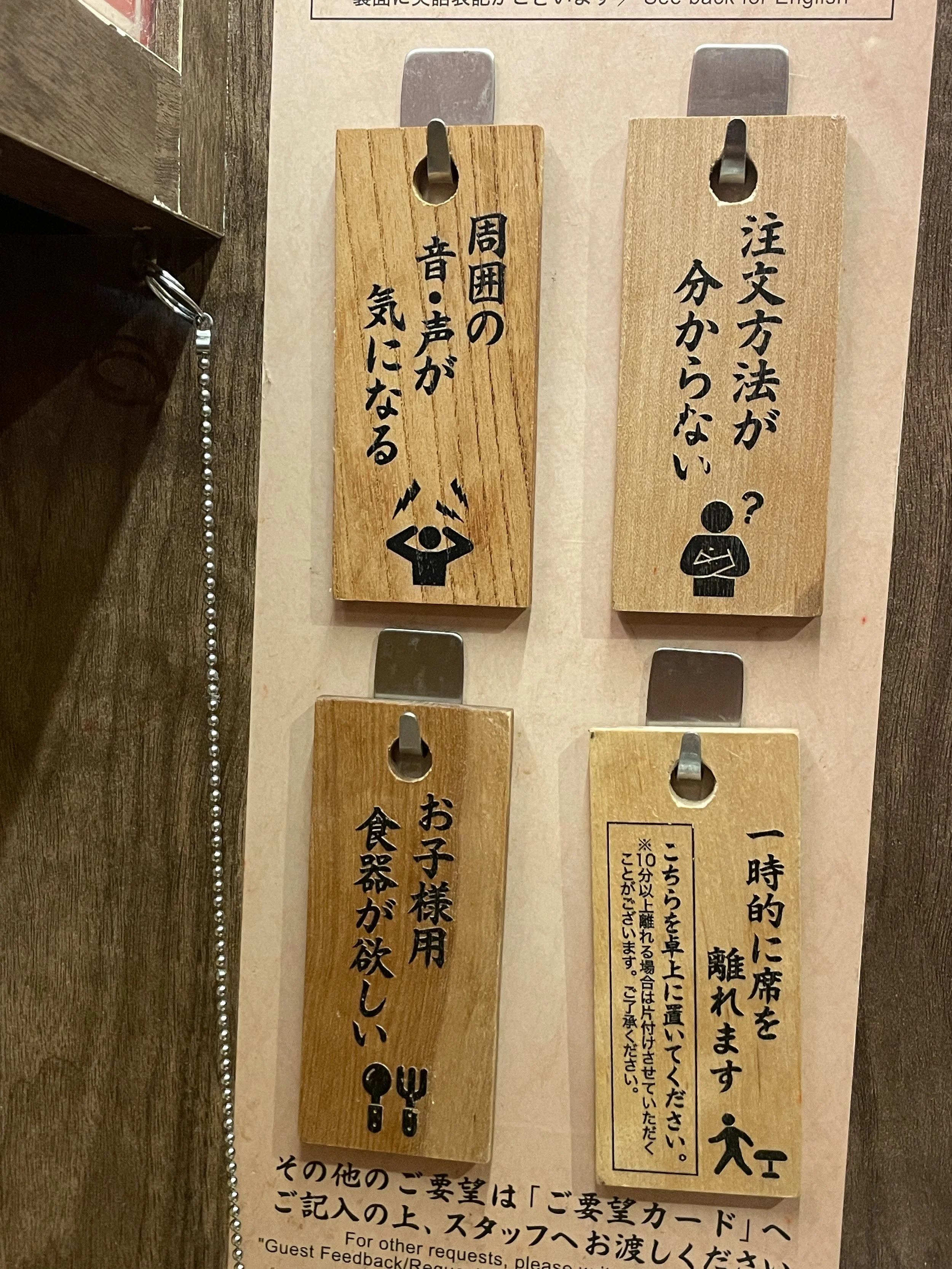Is Ichiran Ramen on Your Japan Travel Itinerary?
Should you eat at Ichiran when traveling in Japan?
Honestly, I can’t answer that question.
What I can tell you is that, given how much you’ll pay for a bowl of Ichiran ramen, how long you’ll stand in line and what you’ll be served, there is one bold statement I will firmly stand behind:
When you see an Ichiran in Japan, know that there will always be ramen nearby that is:
Better,
Cheaper, and
Faster
And this triad pretty much never comes true in life, does it?! We usually have to settle for one of those, maybe two.
But thanks to the product and phenomenon that Ichiran has become esoecially among tourists in Japan, it’s a pretty solid bet that other ramen shops are going to serve up a tastier bowl of ramen, charge less for it and have you in and out in much less time.
Time is precious when traveling in Japan. If you’re here for a week or two, think of what waiting an hour or more represents in terms of time lost on your Japan travel itinerary.
Will you recoup the time invested, in terms of a payoff in the form of a special and highly memorable meal? I might make that argument about some restaurants in Japan — when done strategically on your itinerary. I can’t make that case for Ichiran.
What’s the Deal with Ichiran Ramen in Japan, Anyway?
The line snakes around the block, tourists clutching their phones, eagerly awaiting their chance to experience what YouTube & Instagram have hyped up as a must-eat ramen in Japan.
Among the hundreds of Michelin-starred restaurants in Japan (Tokyo has the most of any city in the world!), many specialize in ramen.
Ichiran is not among those restaurants.
But yet here the people wait. In droves. And so on a cool autumn morning, we joined them, in a Kansai-area Ichiran outpost for a weekend early lunch.
Did I mention the long line? Already I was filled with regret, knowing that I’d personally eaten at a half dozen ramens shops in a short walking distance radius that were all bangers, and had either no line or minimal.
But we were determined to try the Ichiran experience — if for no other reason than so you don’t have to.
How Did Mid Become Must
What began as a simple but potent Hakata ramen shop (on Japan’s southern island of Kyushu) has morphed into an international phenomenon. I never had the OG, so I can’t tell you how this one fares in comparison.
The experience at Ichiran ramen wasn’t what I was expecting.
You line up & wait, pay heftily in advance at the multilingual digital kiosk that hard-sells extra toppings, and wait again while the board on the wall shows stations becoming available with flashing lights (and the Ichiran jingle playing each time).
Eventually you’re seated in a study hall cubicle. A bamboo curtain separates you from the counter staff, and partitions on either side divide you off from patrons sitting nearby. Might be appealing for a solo traveler in Japan, though couples, families or groups traveling together will have to decide whether this works.
Does eating alone in a cube enhance the ramen experience?
You can’t see the other customers (though you can hear them coughing, ahem).
You can’t see the staff. You’re not meant to interact with the staff, actually, at least not by verbal means. On the wall are little wooden blocks, each with a message in Japanese & English both, proclaiming things like:
“I don’t understand how to order”
“I’m leaving my seat for a moment” (if you want to return, sigh)
“I need utensils for children” (literally says this in Japanese, while the English version says spoon & fork);
and “The noise level in here is too loud” (introverts unite… but not face to face or with spoken words)
These instructions for the server in little wooden vessels are designed so that you don’t actually have to (shudder) speak to the server. You’re to press the call-server button and place one of the blocks near the curtain so they’ll see it when they briefly make an appearance. I thought about whittling a little block and writing “bring me a child-size version of irony.”
There’s a water spout at your workstation. And nothing else. None of the usual ramen counter accoutrements, such as salt & pepper, chili oil, pickles or other condiments.
Instead, they hand you homework. Choose your soup intensity, oil level, garlic & onion amount (but it costs extra to get a reasonable amount), noodle firmness and spice level.
Will what comes actually reflect what you handed in on your ramen quiz sheet? Who knows, you might win the lottery.
The "Famous" Tonkotsu Broth: Ichiran or Also-Ran?
Eventually, a server opens the bamboo curtain, places a ramen bowl on your desk (where your history & trig folders remain shut while you write a note to your wife in the next study carrel asking if she likes you), bows and shuts the curtain. You’re left alone, looking at the bowl that’s not steaming.
It looks like… ramen.
In general, tonkotsu broth is typically rich, complex & almost creamy in consistency. You can walk into a local ramen shop smelling (and feeling the heat from) a soup that’s been simmering for hours on end. It should arrive at your table just about hot enough to fog the lens on your camera.
I’ll leave it up to you to determine whether the above was executed, keeping my comments neutral regarding Ichiran (a large, corporate run chain of ramen eateries in Japan and around the world, offering a unique dining concept that's distinctly different from smaller, locally-owned ramen shops).
We usually aim to eat in local restaurants, supporting the community and experiencing a wider variety of food. But some people prefer the consistency and sameness that larger chains provide. To each their own.
Beyond the Broth: Noodles & Toppings
Real chashu is pork belly that's been lovingly braised until it breaks apart on your spoon and dissolves on your tongue.
Ichiran has “chashu” on the menu. We did not see real chashu in the bowl. But there was meat, most likely pork.
Ichiran has “no-pork” restaurants in Osaka & Tokyo, appealing to tourists (and some expats) following halal, kosher or other porkless diet regimes. Perhaps “No pork” would have been a better alternative to this bowl.
As for the noodles? Well, proper Hakata-style ramen noodles tend to be thin but firm, with a distinctive bite that stands up to the rich broth. And they typically taste like they were made fresh at that shop that day – or at least at a nearby noodlery sometime this week.
I ordered a “kaedama” at the kiosk in advance. Pro move in general, the kaedama, as it brings you a second serving of noodles, meant to be served hot and added as you’re finishing the original noodles but have hot broth left over.
Local ramen shops usually do this really well. And we’ll leave it at that.
How to Enjoy Ramen in Japan
So does Ichiran live up to the hype?
You can be the judge. Try it here in Japan, if you like. It could be the entry point to your ramen journey. Or not. Many travelers are rewarded nicely by eating in local ramen restaurants with plenty of unique offerings.
Japan is home to thousands of local ramen establishments where dedicated chefs spend years perfecting their craft. They serve all kinds of ramen types, from tonkotsu to shio, shoyu, miso and a range of sub-varieties. Some are better than others. Part of the fun is discovering new and different places, and finding gems among the many.
Personally, we like to encourage our clients and friends to try local ramen shops while traveling in Japan.
If you’ve been reading this far, you know why. They’re better, cheaper and faster.
Have you eaten ramen at Ichiran before? How about other, local ramen shops in Japan? What did you think? Let us know in the comments below.





